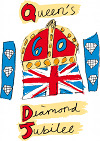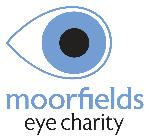Folk Fiddle lessons online / Sight reading in groups / Violins / Violas / Cellos /
 Music for the English quickstep Royal Quickstep collected by Joseph Winder in Lancashire 1831-41, arranged for my students to play in the year of HM The Queen's Diamond Jubilee 2012. Play this tune and raise money for research into eye disease and blindness at Moorfields Eye Hospital.
Music for the English quickstep Royal Quickstep collected by Joseph Winder in Lancashire 1831-41, arranged for my students to play in the year of HM The Queen's Diamond Jubilee 2012. Play this tune and raise money for research into eye disease and blindness at Moorfields Eye Hospital.
Key: G Major
Time signature: 6/8
 and
and  and
and  and
and  Also included are a quaver upbeat and broken slurs. The 1st part has
Also included are a quaver upbeat and broken slurs. The 1st part has 
Level of ability: There are three fiddle parts and a chord outline:
i) The tunes (Treble clef) chosen require a good working knowledge of the keys with any finger pattern 1_23 or 12_3 or 1_2_3 involved. This part is also available in Alto and Bass clefs (in lower 8ves).
ii) 2nd Violin/Viola part (Treble clef) uses the 1_23 pattern. This version can also be used to encourage more advanced violists to sight read in the Treble clef. This part is also available in Alto Clef as well as an 8ve lower in Bass clef.
iii) 3rd Violin/Viola part (Treble clef) consists of open strings and 1st fingers and has been designed to be suitable for pupils who have just completed a year of Wider Opportunities or are sight-reading in an orchestra for the first time. The Treble clef part can be used to encourage more advanced violists to sight-read in both clefs. This part is available in Alto Clef and also an 8ve lower in Bass clef.
iv) There are a list of chords for piano. Whilst not essential, it does add to the fiddle orchestra flavour and increases the amount of musicianship being developed. Another pupil has learnt how to do this whilst the group has been improving their sight-reading. Fiddlers have to listen to the changes in harmony as one of their key methods of knowing where they are. I play the fiddle instead of conducting in order to encourage counting and listening.
Balance: As long as the tune can be heard it is not critical how many people are on each part. With all parts having the same rhythm I encourage players to move up a part as soon as they feel they can manage the next level. ii) 2nd Violin/Viola part (Treble clef) uses the 1_23 pattern. This version can also be used to encourage more advanced violists to sight read in the Treble clef. This part is also available in Alto Clef as well as an 8ve lower in Bass clef.
iii) 3rd Violin/Viola part (Treble clef) consists of open strings and 1st fingers and has been designed to be suitable for pupils who have just completed a year of Wider Opportunities or are sight-reading in an orchestra for the first time. The Treble clef part can be used to encourage more advanced violists to sight-read in both clefs. This part is available in Alto Clef and also an 8ve lower in Bass clef.
iv) There are a list of chords for piano. Whilst not essential, it does add to the fiddle orchestra flavour and increases the amount of musicianship being developed. Another pupil has learnt how to do this whilst the group has been improving their sight-reading. Fiddlers have to listen to the changes in harmony as one of their key methods of knowing where they are. I play the fiddle instead of conducting in order to encourage counting and listening.
Tip: If new rhythms are involved I ask the whole group to read the 3rd part to establish the flow. We then split to 2nd and 3rd and follow on to all three parts. Thus 3rd part players get extra practice and the most advanced read the rhythms with the maximum combination of notes at hand.
To access: Create a login on this site. Collect the key from my jubilee fiddlers fundraising page at bt.com. Return to lol4life and enrol yourself into any of the Jubilee tunes.
Violin / Sight reading / Fiddle / Sight reading / Viola / Sight reading / Cello / Sight reading / Violin / Sight reading / Fiddle / Sight reading / Viola / Sight reading / Cello /
© Sarah Hackett 2012
www.lol4life.co.uk